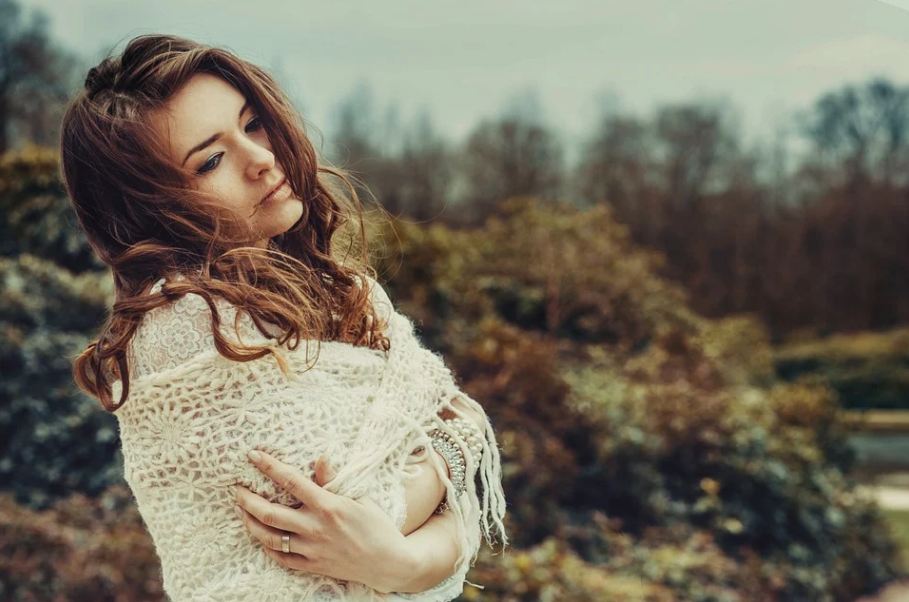Who would have thought that a simple wrap can be fashionable? Shawls have been around since they first existed in 14th-century Persia. The first shawls were woven rectangular pieces of cloth worn over the shoulders and originally made from the wool of the cashmere goat or pashmina goat. From Kashmir, the shawl first appeared in Europe after Napoleon’s return from Egypt in 1798, and they quickly became fashionable in the 1800s and beyond. Nowadays, shawls are made in different fabrics and materials. There are still the Kashmir and the pashmina shawls, though they are still woven in the traditional manner.
Shawls are also available in various shapes – square, triangular, rectangular, round, or oblong. There are shawls with unique features, such as the butterfly-shaped Faroese shawl.
Shawls are worn for a variety of reasons – to keep the wearer warm, to cover parts of the body, to complement an outfit or costume, or for symbolic purposes. Check out the different types of shawls:
1) Kashmir shawl
If you’re knowledgeable about shawls, you can easily tell a Kashmir shawl by its unique Kashmiri weave. Kashmir shawls are either made of wool from the cashmere goat or shahtoosh wool from the Tibetan antelope. The Kashmir shawl is lightweight but absolutely warm. Plus, it’s got those beautiful characteristic buta or paisley patterns.
After its introduction in Europe in the late 18th century, the Kashmir shawl soon found itself being worn by aristocratic women. Queen Victoria and Napoleon’s wife, Empress Josephine, popularized the Kashmir shawl, wearing it as a luxury and status symbol.
2) Pashmina shawl
Pashmina shawls are among the best-quality and most popular shawls around. Of course, you can only buy genuine pashmina shawls from the Indian state (or multinational region) of Kashmir. It is usually made from pashmina, a finer variant of spun cashmere wool from the Changthangi goats. Pashmina shawls are noted for their floral motifs, incomparable lightness, softness, and warmth.
The pashmina shawls are still weaved traditionally, resulting in gorgeous motifs and striking colors. The stunning work and the craftsmanship that go into making pashmina shawls are simply to be admired!
3) Kullu shawl
Kullu shawls originated from the Indian state of Himachal Pradesh. They are typically made from either Angola wool, Merino sheep wool, or wool from local sheep. These different types of wool are sometimes combined to create a shawl of different textures. Unlike other shawls that usually have floral motifs, the designs of the Kullu shawls have distinctive geometrical patterns.
4) Naga shawl
Naga shawls are traditional shawls made by the Naga tribes in the state of Nagaland, India. It is known for its distinctive red-and-black color and geometric motif. Such design and coloring symbolize folk stories of the region, which make the shawl look more stunning.
Naga shawls are usually made of dyed wool (usually black and red) and weaved together through a method called “weft” patterning.
5) Knit shawl
Knit shawls are typically triangular shawls. In making the knit shawl, it is usually started from the neck down and may or may not be shaped. But unlike in other knitted shawls, knitting the Faroese shawl (pictured above), starts at the bottom of the shawl and proceeds up from there. A Faroese shawl is also unique in that it is made to have the shape of a butterfly’s wings and features a gusset at the back-center of it.
6) Stole
A stole is a type of shawl especially worn for formal events, usually worn over a ball gown or a party dress. It is generally narrower than a regular shawl and made of expensive fabric.
A stole can also mean a piece of fur (or a set of furs), usually worn with a gown of suit. Fur stoles may also feature the head of the animal (such as a fox, ferret, or ermine).
